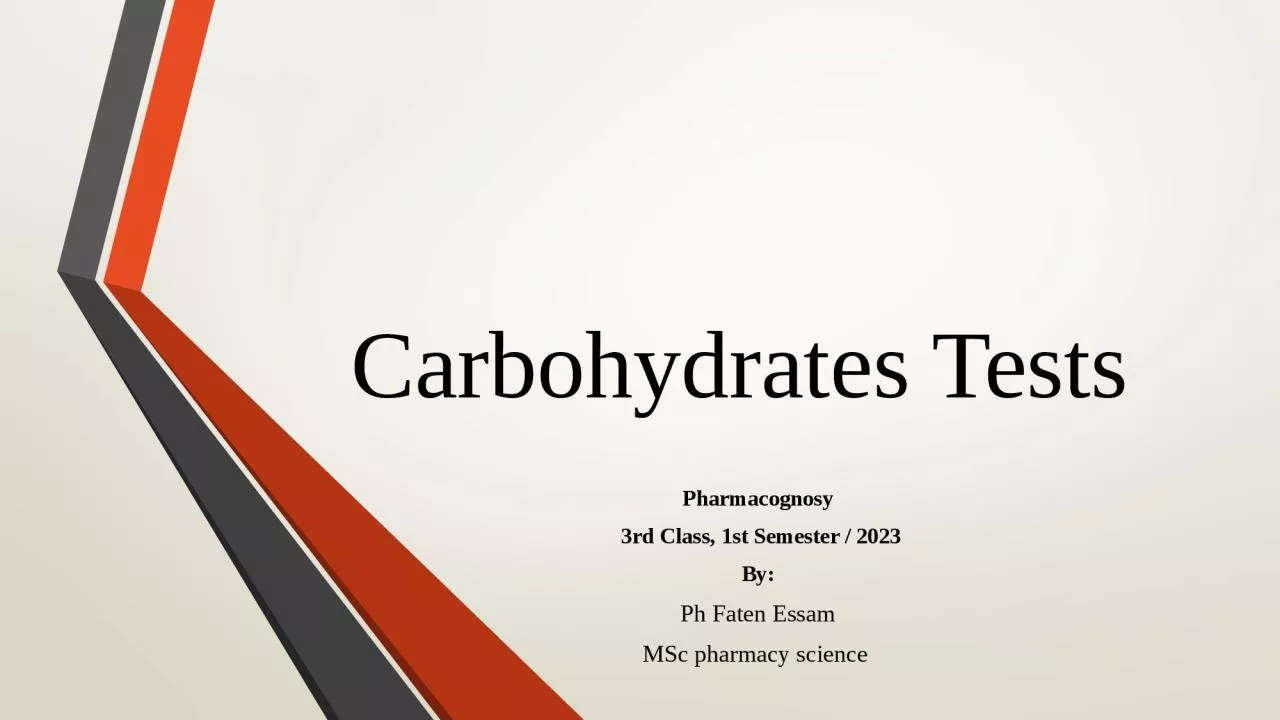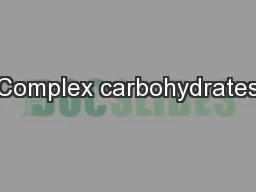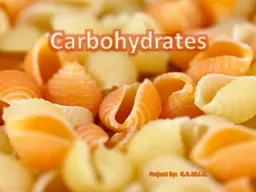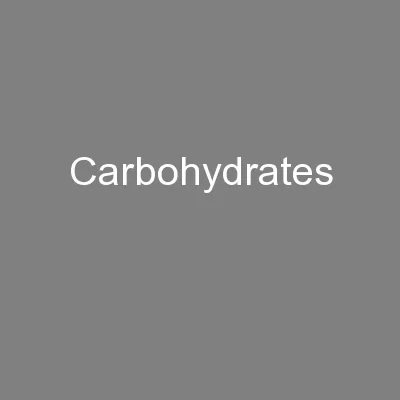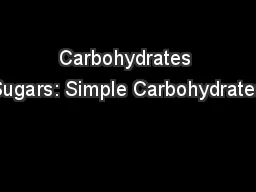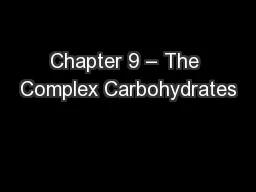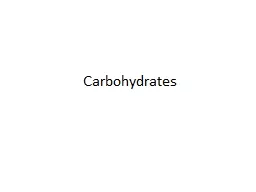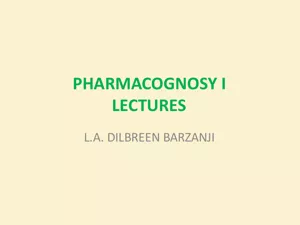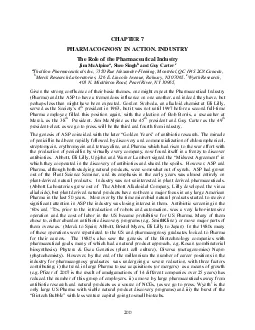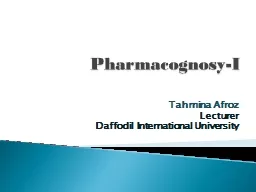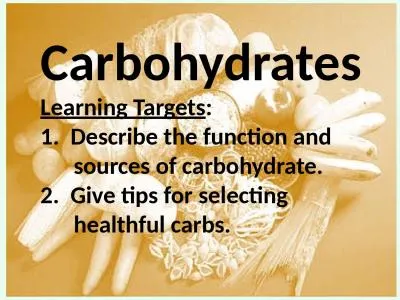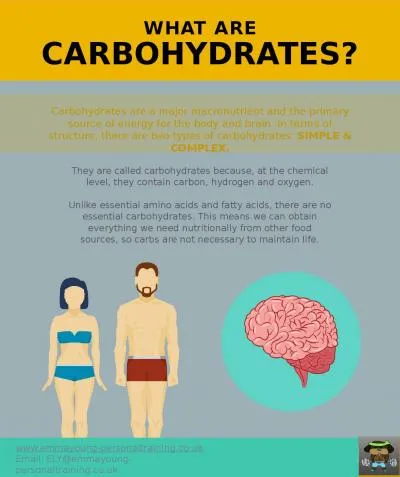PPT-Carbohydrates Tests Pharmacognosy
Author : ava | Published Date : 2024-01-29
3rd Class 1st Semester 2023 By Ph Faten Essam MSc pharmacy science Carbohydrates C lass of naturally occurring compounds which are of great importance to
Presentation Embed Code
Download Presentation
Download Presentation The PPT/PDF document "Carbohydrates Tests Pharmacognosy" is the property of its rightful owner. Permission is granted to download and print the materials on this website for personal, non-commercial use only, and to display it on your personal computer provided you do not modify the materials and that you retain all copyright notices contained in the materials. By downloading content from our website, you accept the terms of this agreement.
Carbohydrates Tests Pharmacognosy: Transcript
Download Rules Of Document
"Carbohydrates Tests Pharmacognosy"The content belongs to its owner. You may download and print it for personal use, without modification, and keep all copyright notices. By downloading, you agree to these terms.
Related Documents

